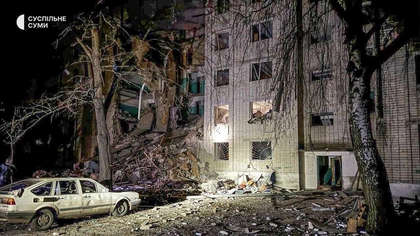On Sept. 3, the commander of the Birds of Magyar aerial reconnaissance unit, Robert Brovdi, who uses the call sign "Magyar", posted a video on his YouTube channel which showed the results of the work of his military unit.
He said that through experience and without testing or scientific justification, his unit had learned how to “land” the vast majority of first-person view (FPV) drones launched by Russians on the front-line.
JOIN US ON TELEGRAM
Follow our coverage of the war on the @Kyivpost_official.
“Without a specialized unit, we started an experiment 10 days ago. I have identified three crews with ground monitoring stations. This allowed us to detect everything that flies into our areas and try to influence it. We have applied this mechanism in 92 cases, 61 of which were successful,” Magyar said.
The majority of Russian drones currently use unencrypted analog video communication systems. The lack of protection of these signals means their transmissions can be easily monitored using a simple analog video signal reception system. This allows the person monitoring the signal to see what the Russian pilot sees in real time.
According to Magyar, it is necessary to arrange a clear system for Ukrainian electronic warfare units to constantly interact and monitor the identified communication bands for each individual unit, battalion or brigade. In doing so it is possible to “critically reduce the successful arrivals of Russian kamikaze drones.”

Russian Drone Strike on Sumy Dormitory Kills Ten, Including a Child, and Injures 13
“Yes, the Russians are also suppressing our signals. But, first of all, it means that at the moment when they do this, they cannot readily launch their own drones. Secondly, they don't know what we're flying and when while we clearly know when they are flying,” Brovdi said.
He noted that three crews of two soldiers can effectively close the airspace around a battalion location by continuously monitoring the entire area and communicating with neighboring electronic warfare units.
He also noted that he is ready to share details of the ground-based analog radio signal monitoring station he uses, which is of Ukrainian manufacture, with all interested military personnel who do not currently have their own electronic warfare equipment.
Magyar reported on his YouTube channel on Sept.5, that the manufacturer had already received more than 250 orders for the monitoring equipment.
In June, Magyar announced a fundraising effort for “Narodni drones,” with the aim of raising Hr. 350 million for the purchase of 20,000 F7 kamikaze drones and 200 repeaters.
Each of these kamikaze drones can carry one kilogram of explosives with the repeaters extending the range of each drone by three times further than conventional drones do.
On the Sept. 5 telethon, Mykhailo Fedorov the Deputy Prime Minister for innovation, development of Education, Science and Technology and digital transformation said that units of Ukraine’s UAV strike companies using drones provided by the Army of Drones program had destroyed 1,200 pieces of Russian equipment worth of hundreds of millions of dollars since June.
“We have many cases when drones costing 500 dollars can destroy occupier's tanks, which cost from 3 to 5 million dollars,” the minister said.
He said that the intention was, during this year, to increase production of Ukraine’s UAV fleet a hundred-fold which would allow an exponential increase in the ability to strike against the enemy’s armored vehicles.
You can also highlight the text and press Ctrl + Enter






